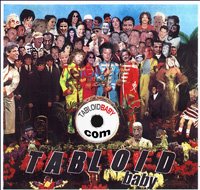skip to main |
skip to sidebar
Another take on David Halberstam
 Journo David Halberstam reported from Vietnam and the NBA, lived into his seventies, and wound up dying in a car crash on his way to interview Y.A. Tittle. His cardiologist brother was murdered by an escaped convict in 1980. Halberstam never wrote about or commented on the murder. Our Man Elli In Israel wrote Halberstam's profile in the Encyclopedia Judaica:
Journo David Halberstam reported from Vietnam and the NBA, lived into his seventies, and wound up dying in a car crash on his way to interview Y.A. Tittle. His cardiologist brother was murdered by an escaped convict in 1980. Halberstam never wrote about or commented on the murder. Our Man Elli In Israel wrote Halberstam's profile in the Encyclopedia Judaica:HALBERSTAM, DAVID (1934- ), journalist, author, historian, biographer, sportswriter, winner of the Pulitzer Prize. Halberstam was the younger of two sons born in the Bronx to Charles, a military surgeon whose parents had immigrated from Poland, and Blanche (Levy), a schoolteacher whose parents had come from Lithuania. His father’s work took him to Winsted, Connecticut, El Paso and Austin, Texas, and Rochester, Minn. In 1951 Halberstam graduated Roosevelt High School in Yonkers, N.Y., where he wrote for the school newspaper, and then he attended Harvard College, where he became managing editor of the Crimson. Upon graduation in 1955, Halberstam chose to work in the South, his first job coming at The Daily Times Leader in West Point, Mississippi, the state’s smallest daily newspaper, and seven months later he moved to The Tennessean in Nashville, where he covered the early Civil Rights movement. Halberstam joined the New York Times in 1960, working first in Washington before being assigned to the Congo, and then in September 1962 to the paper’s bureau in Saigon. It was there that Halberstam became a legend as one of a small group of reporters who began to question and speak out against the official administration version of the war in Vietnam, which led U.S. president John F. Kennedy to request that Halberstam be transferred to another bureau. Halberstam’s reporting earned him the George Polk Award in 1963 and the Pulitzer Prize in 1964, for international reporting. In January 1965 he was sent to Poland, where his reporting on the repressive and anti-Semitic policies of the Communist regime led to his being ordered to leave the country. Halberstam then reported from Paris, and in 1967 he left the Times to become a contributing editor for Harper's. He started writing books including The Making of A Quagmire: America and Vietnam During The Kennedy Era (1965), The Unfinished Odyssey of Robert Kennedy (1969); and Ho (1971), a biography of Vietnamese revolutionary leader Ho Chi Minh. But it was his best-selling book, The Best and the Brightest (1972), a critical history of America’s involvement in the Vietnamese conflict, which established Halberstam as an important commentator on American politics and power.
The enormous success of The Best and the Brightest led to a career in writing on a wide range topics filled with anecdotes, metaphors, and a narrative tone usually seen in fiction. It included The Powers That Be (1979) that examined the influence of the news media on American society; The Reckoning: The Challenge to America's Greatness (1986), a comparative history of the Japanese and U.S. automobile industry; The Next Century (1991), on the diminishing educational standards and decline in economic productivity in the U.S.; The Fifties (1993), a look at the decade integrating history, social change, politics and technology and their impact on each other and the world, which was made into an eight-part television series; The Children (1998) about the youth who were part of the Civil Rights movement; War in the Time of Peace: Bush, Clinton, and the Generals (2001), a look at how U.S. domestic politics came to dictate foreign policy, which was a runner-up for the Pulitzer Prize; and Firehouse (2002), the story of the firefighters who sacrificed their lives on September 11, 200l. Halberstam also wrote fiction: The Noblest Roman (1961) and One Very Hot Day (1968).
Halberstam is also a leading sportswriter, beginning with The Breaks of the Game (1981), an account of his year spent with the Portland Trailblazers, considered among the best books ever written on professional basketball; The Amateurs: The Story of Four Young Men and Their Quest for an Olympic Gold Medal (1985), a study of the world of sculling; Summer of '49 (1989), a look at the drama of the 1949 pennant race; October 1964 (1994), chronicling the season and World Series that was to become the last year of the New York Yankees dynasty; Playing for Keeps: Michael Jordan and the World That He Made (1999), documenting the making of a legend; The Teammates: A Portrait of Friendship (2003), about the 60-year friendships of baseball players Ted Williams, Dominic DiMaggio, Johnny Pesky, and Bobby Doerr; and The Education of a Coach (2005), an in-depth look at the life and career of NFL coach Bill Belichick of the New England Patriots. Halberstam also edited the anthology, Best American Sports Writing of the Century (1999).
[Elli Wohlgelernter, 2nd Ed.]







































1 comment:
Good Man, Elli. You mentioned DH's "The Making of a Quagmire..." first. Most Obits put "The Best and the Brightest" first and don't even mention "Quagmire."
If anyone wants to understand the connection between the failures in Vietnam and Iraq, read "Quagmire." It was published in '63 and told of corruption in the Vitenam government, and the lost cause of sending our troops there.
1963.
The US stayed in Vietnam until 1975.
JFK wanted DH fired from the NY Times for his reporting on the war. DH was excoriated as a Non-Patriot who was undermining the war effort.
Sound familiar?
Post a Comment